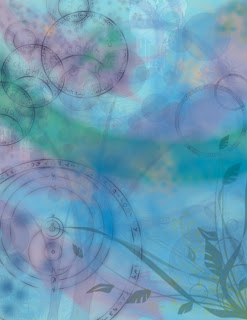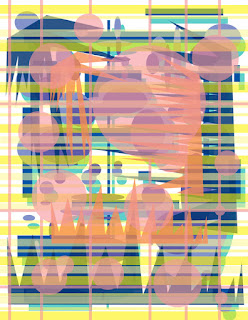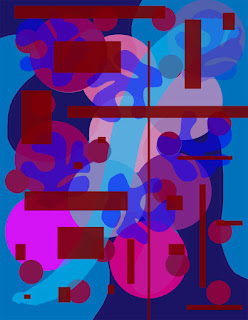
Wednesday, February 11, 2009
Reproducing Art
Clones...
One of the most annoying things about seeing works of art is being crammed in a museum and crowding around a work. If the pieces can be replicated in their original settings, such as the Veronese that's great. I would much rather experience the piece in that sort of setting than in a museum. I do think something would be different about the clone of a master work, but I would not necessarily say it is something that is lost. When viewing the piece it would be interesting to think about how the clone is different. That adds a new level to the art viewing experience and it should be embraced for what it is. Also, I think that works like the Last Supper can be appreciated for the composition and the colors and the gestures of the figures. To me, not seeing the brush strokes wouldn't be much of a loss. However, if i were to stand in front of a DeKooning replica I don't think it would be the same experience. In a piece that is so much about the artist's gesture, and movement, and the depth and texture created by the brush, a clone probably could not provide the same experience.
Greenaway's piece is incredible. I can never quite wrap my head around how things like that are accomplished. I'm very low-tech as an artist and in my thinking, so I was blown away. It's great that he took a masterpiece like the Last Supper and re-interpreted it. I would absolutly love to have an opportunity to be present for something like that.
Clements: Week 4 Response
Greenaway however, utilizes a masterpiece in a respectful manner. He has been inspired by the original painting and created another beautiful piece of art in response. I do think it is controversial however, that he was allowed to project his film on the original work. How can we be absolutely sure that this is really not damaging the piece...even if the "proper" precautions have been taken. It just seems too risky. It was however, only allowed once...so it's still debatable. His respectful and carefully reproduction of the original is allowing others to appreciate his work in as realistic a setting while still protecting the original painting. Maybe this is not the optimal viewing experience, but I'd say it's pretty close. When care, time, and expertise is applied to reproducing a piece of art it is acceptable. Particularly when the work may be aging...would it be better if it was lost forever? I don't think so. The context and use of a reproduction seems to be of principle importance.
Cloning
Tuesday, February 10, 2009
Last supper for everyone
It seems unfortunate that Greenway was criticized so harshly for making a virtual archive . If there is so much research done on the intent of the piece, its vibrancy and location, why wouldn't a replica of the lost color etc. be a significant manifestation or product of all that research? History is butchered so much anyway , if creative license is taken with other replicas of the suppers, why is this one considered doctored or copy-cat art? Who is really being threatened and why?
If Jesus was a modern man he would be institutionalized. If Da Vinci was a modern man he would be a draftsman or perhaps a re-inventor like Greenway.
Cloning
Cloning
di Vinci Clone
I thought that it was interesting how he was able to clone such a large piece of work, with large scanners and printing it out. But if it was between a reproduction and an original, depending of the artwork, I would prefer the original, especially, if it is a textual painting. When it is a reproduction, I would not be able to see the texture and brush strokes. When I look at art, I usually look at the brush strokes more than the painting itself. I am always interested on how the artist got from a blank canvas to a canvas filled with color.
With the video on his work, I thought it was interesting. It reminded me of watching documentary on a history. When the camera goes up close to the image and has music playing in the background. It also make it seems like the person in the image is moving but really not moving.
THE NEW REAL
Artwork in chapels used to be painted over and refurbished by hand all the time so that paintings would stand the test of time. Now with cloning it’s possible to recreate the artwork down to minute details with the help of technology. Essentially the same thing is happening but the original artwork is not being touched. And one could argue that “cloning” is another art form.
That said, I think Greenaway’s intention of revitalizing great paintings is a great one because, and I agree, “we have lost the knack of really seeing [the art].” Greenaway manages to do this in a very interesting and provocative way with recreating the play of light cast on the painting. And to have this performance recreated in the actual refectory I would image would be quite stunning. However, what bothered me about the Greenaway filming was that because Greenaway is a famous filmmaker he was allowed to project light onto the actual Last Supper when the average person can’t even take a picture of the painting with a flash. The refectory in it’s entirety could have been recreated and staged with the clone inside and would have produced the same effect.
Da Vinci Article
The piece on the last supper was really interesting. I think the artist was able to bring a contemporary audience to a work of art which is relished for its antiquity. This art work was able to allow the viewer to see the painting in a way it had never been seen before. This is what art is all about, right? Yay!
DaVinci Clone
cloning
Youtube Response
Response: The Da Vinci Clone
Greenway
I was in San Giorgio Maggiore in 2007 and I saw the “clone” Veronese. Being inside San Giorgio Maggiore was an interesting experience. It was rather dark and empty inside but the island itself has amazing views. The “clone” painting like the original is massive and its placement is impressive. I really didn’t feel jipped at all. In this particular case because a “clone” was placed in its intended viewing place I believe that the “clone” begins to have substantially more value.
Also, after reading the article I watched a two minute clip of Greenway’s performance. I think that the concept of this piece is impressive and innovative. However, I do believe that subsequent showing with the “clone” are devoid of the artists original intent, which was focused on reviving the aesthetic experience.
My confliction in regards to “clone” art is based solely on the intention of the recreation. I am brought back to the fact that the Roman’s recreated many Greek art works and now they are viewed as treasures. Also, I believe that replicates are beneficial to artists. However, the practice of “cloning” on a mass produced scale is a slippery slope. One that is similar to the allusion and dissatisfaction regarding the Mona Lisa which crushes the once coveted aesthetic experience.
Monday, February 9, 2009
internet art...I'm catching up on readings I promise!

The internet art article was a little outdated I feel, but I still made some good connections while reading it. My main response while reading it was to the part where she explains how the students responded to internet art, and its being or not being art. She was talking about the fact that she was surprised at how little the students related to and understood internet art given their everyday use of the internet. Of course, everything looks better in hind sight, but this is the outcome I would have guessed. Nobody understands art that is the new pioneer medium or movement, and kids especially I think would have a hard time relating to it. But I thought it was great that she was reflective enough to come up with new ways to teach them and learn right alongside the students. I think that's the best thing you can do, and that's what I hope to do as a teacher.
Sunday, February 8, 2009
The New Real
maria_homework_latish
And I have to admit I had never thought of it like that; that computer are taking the power away from t.v. I always thought that they sort of work together (zapping out the reality of our real lives). I agree that the lines are being blured between these two forms of semi mindless entertainment (that I love). I think that the computer democratizes who has the power in a way, we can post out own images or videos... but at the end of the day there is still a big boss making a lot of cash off the distribution of this stuff. It is google instead of cbs, who cares, same difference. Reality t.v. is t.v.s ansure and pop up comercials are the internets way to be competitive back. So we get to find a place to show ourselves off (other then public television) and that makes everyone happy, maybe 15min. of fame is not what we should be striveing for, I want real change, I wana go to the park! (but can't forget my digital camera, to upload my new photos onto facebook and share them with my friends)!!!



































